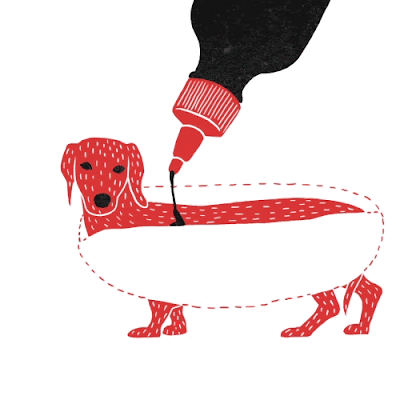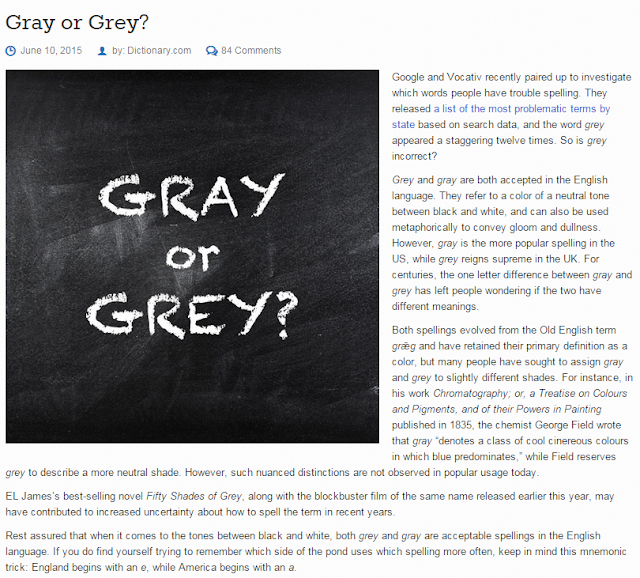From NPR - Mona Lisa's twin 蒙娜麗莎的微笑有兩幅? 畫家達文西是同志?名畫失竊記情節很精采啊。
 |
| 左上角的畫作是舉世聞名的蒙娜麗莎(Mona義大利文有聖母之意),右邊則是另外一幅近年來被發現的蒙娜麗莎雙胞畫,畫中的兩個女人當然是同一個人,右邊畫作的作者極有可能是達文西(對不起應該要改稱他為李奧納多了不是嗎?)的戀人啊。 |
托福聽力考試,最令大家頭疼的學科之一就是藝術史啊,所以教練儘量多蒐集相關訊息給大家補一補。這些有趣的名畫背後都有故事,多欣賞這些藝術作品也能讓我們的氣質變好,所以又能學英文,又能培養氣質兼顧好考試,真是一舉數得。
達文西筆下的蒙娜麗莎,是羅浮宮的鎮館之寶(這幅作品之所以舉世聞名,其實跟1911年這幅畫在羅浮宮光天化日之下被竊有關。這幅作文曾經於1911年被竊,一直到兩年後才又被找回來,這個事件也讓這幅作品因此聲名大噪)。2011年在西班牙普拉多美術館,透過最新的科學鑑識儀器,發現了另外一幅蒙娜麗莎相作品,外界稱之為Mona Lisa's Twin,這幅作品雖然已被專家證實並非出自達文西之手,不過有趣的是,畫中的女主角Lisa麗莎,不但在當時可能真的存在,而且除了達文西之外,應該還有別的畫家見過她。
這幅新發現的蒙娜麗莎畫作,經過修復後,色澤比達文西原版的創作要來得更瑰麗鮮豔
,且專家所懷疑的可能作者之一,也就是Salai,還被質疑是達文西當時的同性戀人。總之,這幅作品重見天日後,達文西的性向,畫中的女人與這幅作品到底出自誰手?在西方學術圈與藝文界掀起一陣風暴。欲知詳情,別忘了下載聲音檔,搭配下面的transcript解析一起研讀。訓練聽力之餘,也能增長見聞,真是一舉兩得啊。因為教練是念藝術史的,順便來跟大家分享一下當年名噪一時的蒙娜麗莎搶案始末。
 |
| 1911年8月21日,法國羅浮宮收藏的達文西(爛翻譯) 名畫蒙娜麗莎(的微笑)被人偷走了。 光天化日下,這幅名畫竟然不翼而飛。 到底是誰偷走的呢?上圖就是事發後拍下的照片。 在那樣一個年代,羅浮宮有四百多個展示間, 警衛人手不足就算了,加上畫作經常被取下來清潔或是拍照, 所以名畫失竊後一下子也沒人發現。 足足過了24小時這幅畫才被證實是真的被偷走了。 |
 |
| 上圖這張相片,便是找到畫作之後,義大利Uffizi博物館館長與畫家Luigi Cavenaghi以及館方的藝術部門主管Corrado Ricci 一起檢視作品所拍攝下來的珍貴照片。各位看到這張照片,對於這幅作品的實際尺寸也有個概念了。這幅油畫在歸還法國羅浮宮之前,還曾在義大利各博物館展示過。 |
The Mona Lisa's Twin Painting Discovered
There are many replicas複製品 of Leonardo da Vinci's painting. But conservators藝術館員/保存者 in Madrid馬德里 have examined one of them and discovered something new. This replica was created at the same time Leonardo was painting his Florentine lady佛羅倫斯女士 with her famously enigmatic smile.謎樣的笑容 The "Mona Lisa" copy belongs to the Prado Museum普拉多美術館 in Madrid. And Martin Bailey, correspondent特派員/記者 with The Art Newspaper in London, joins us to explain.
And, Martin, how did the conservators do this? How did they figure out that they were looking at a copy that was painted at the same time as Leonardo's?
MARTIN BAILEY: Well, last year, they began investigating the painting because they thought it might be interesting, and they used modern technology, which wasn't available decades ago, something called infrared reflectography紅外線反射照相技術. One's able to look beneath the surface of the paint. It's not exactly like an X-ray, but it's similar process. So they use this process, and the first discovery was there was a landscape which is on the original, which had been covered with black paint probably in the 18th century.
So they then began work, very painstakingly stripping away the black overpaint.工作人員不辭辛勞的將覆蓋的黑色油彩給去除 And that process has been going on in the last few weeks. And the face of Lisa and the rest of the painting has been cleaned, and therefore, we see the vivid colors鮮活的色調, which would have been used 500 years ago on this work.
BLOCK: And the reason that they knew these two images were done at the same time is that they could see in Leonardo's painting that he had changed the landscape over time, painting over things, and the same exact changes were made in the copy, right?
BAILEY: Yes. The changes actually mirrored反映出the changes which Leonardo made on the original. So they concluded that the two pictures had been done side-by-side兩邊同時創作 in the studio, and it was probably on easels which were two or three yards(不到三公尺,一碼為0.9144公尺) away from each other. And it's for this reason that we know the picture was done at the same time, so it's the only copy of the "Mona Lisa" which was done whilst Leonardo was alive.
BLOCK: So as Leonardo was tweaking the background(tweak的原來意思是擰,這邊指的東塗塗西抹抹的,可延伸為處理背景), for example, the person standing next to him was doing the same thing, painting over在原來的畫作上再覆蓋一層油彩, doing it - doing another version, and all of those layers are there on both paintings.
BAILEY: Exactly. And it is even possible that Lisa, who is the sitter in the portrait, may have come to the studio, and the copyist複製者 may have actually met Lisa and seen her. So that gives an added twist to it.給人多一點想像的空間
BLOCK: What's the thinking on who would have been painting the "Mona Lisa" copy alongside Leonardo?
BAILEY: Probably one of Leonardo's main assistants, and the two possible names that have been suggested one is Salai, who is a young man and who's thought of probably being Leonardo's lover, and the second possible artist who could have done it is someone called Melzi. And there's going to be a lot of discussion among the Leonardo scholars as to who actually did this picture.
BLOCK: You know, I'm looking at side-by-side images of the two works, Leonardo's from the Louvre and the other, the copy. The copy is much brighter, and she looks much the same but also quite a bit different. How do you think it changes what we understand about the original?
BAILEY: Well, it is astonishing because, first of all, you see a much brighter and much more colorful image. The original "Mona Lisa" in the Louvre is difficult to see. It's covered with layers of varnish清漆 which has darkened over the decades and the centuries and even cracked. 一層又一層的清漆在歷經了百年之後,顏色已經發黑,而且還讓表面龜裂And what is wonderful about the copy is how vivid it is, and you see Lisa in a quite different light. I mean, I thought her eyes are enticing,充滿誘惑力 and you see her enigmatic smile in a way that you don't quite get in the original.
BLOCK: Hmm. You know, I have to say, Martin, that I'm - maybe it's just because it's - the image is engrained in our mind烙印在腦海中, but I think all the mystery is in the original when I look at the brighter...
BLOCK: ...fresher copy另一份作品用色清新鮮艷,讓謎樣的感覺蕩然無存 that mystery is gone somehow.
BAILEY: Well, I think maybe too much mystique has built up about this picture, the "Mona Lisa." I mean, it is after all the world's most famous painting. But people don't look at it fresh. They look at it almost as an icon. And if you go to the Louvre, people aren't actually really looking at the painting. They just want to sort of be in the same room with it. And for me, the beauty of the copy is that it actually makes us look at the painting as a painting, and I hope it will have that effect on other people too.
BLOCK: Martin Bailey, thank you so much.
BAILEY: Thank you.
BLOCK: Martin Bailey is a correspondent with The Art Newspaper in London. Next month, more than 500 years after they were painted, the original "Mona Lisa" and her copy will be temporarily reunited at the Louvre in Paris. And you can see the two side by side at npr.org.













留言
張貼留言